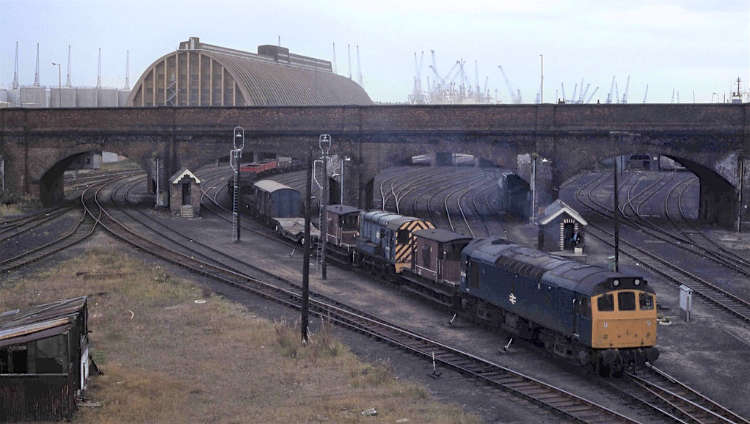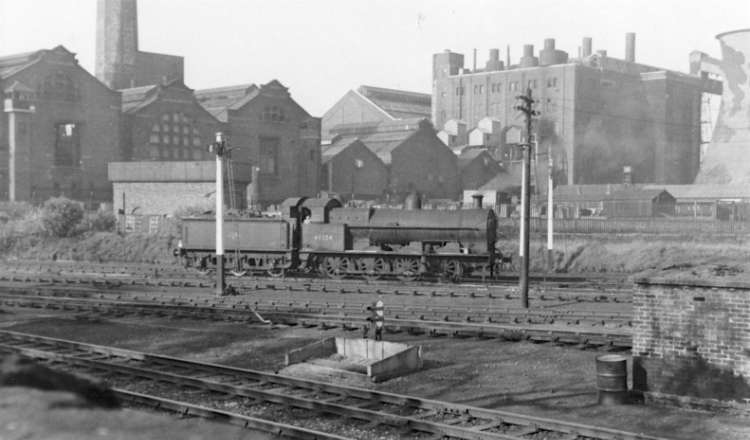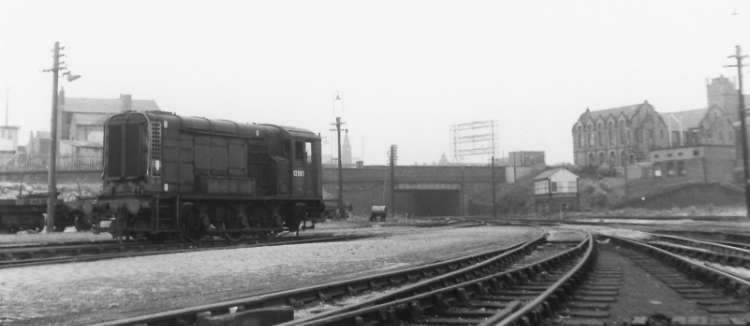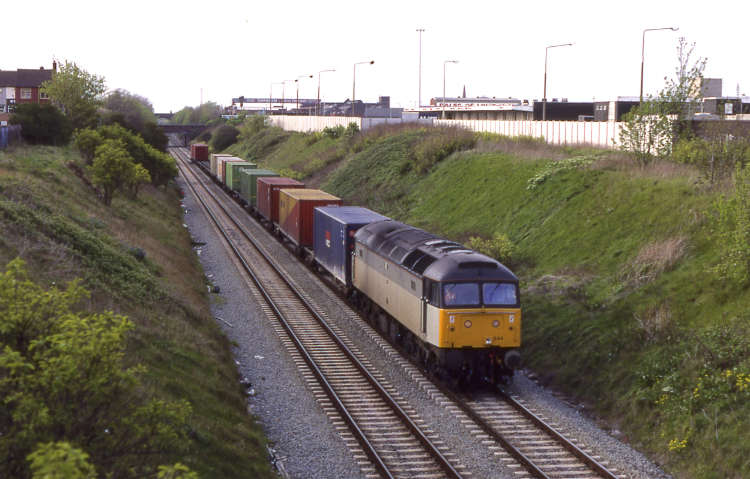
8D ASSOCIATION
The 8D Association is dedicated to promoting the history of the railways of South Lancashire, Merseyside and North Cheshire.
LNWR Canada Dock Branch Line
(including Bootle Junction and Alexandra Dock)

History of the Line
With the expansion of Docks into the north of Liverpool, London North Western Railway (LNWR) wanted a presence in the vicinity so in June 1866, opened the Canada Dock Branch line as far as Tuebrook before the remainder of the line was completed to Canada Dock via a 427 yard tunnel on 15th October 1866 for goods services, giving a total length of 4 miles and 59 chains. Two stations were initially opened at Stanley and Tuebrook. Around 1867, Stanley Cattle Station opened via a 28 chain length line connection with the mainline and this location increased over the years with increase siding space to serve the cattle market.
In July 1870, three further passenger stations opened, being Breck Road, Walton and Anfield as well as Canada Dock which was initially known as Bootle were all the above locations had goods sidings and handling facilities. In November 1870, Edge Lane passenger station was opened with all passenger trains originating to and from Liverpool Lime Street calling at all stations.
With the continuing expansion of Liverpool Docks, LNWR constructed another one mile branch to Alexandra Dock. This was possible by opening up Canada Dock Tunnel and creating a junction to the new branch via Oriel Road Tunnel and Alexandra Dock Tunnel, both of which over 280 yards long. This location was known as Atlantic Dock Junction with the extension finally opened on 5th September 1881 to goods and passenger trains with another station opening at the same time at Bootle Balliol Road. The latter led to the renaming of Bootle to Canada Dock Station. During September 1882, another station was opened at Spellow, serving the communities around Walton.

On 1st May 1886, a connection was made with the Liverpool, Crosby and Southport Railway from Alexandra Branch at what became known as Bootle Junction. Traffic on the branch to both Canada Dock and Alexandra Dock was on the increased but also at various locations on the branch. In the early 1900’s Lister Drive Power Station was built which was accessed via sidings at Stanley Station which meant large deliveries of coal by train.
Signalling on the Canada Dock Branch has been controlled by upto eight different signal boxes on the line, located at Edge Lane, Stanley, Tuebrook, Breck Road, Anfield Sidings, Atlantic Dock Junction, Canada Dock and Alexandra Dock. Also Bootle Junction to access the L&Y Southport line, as well as the North Mersey Line to Aintree. In 1923, LNWR was incorporated into the newly formed London Midland and Scottish Railway (LMSR).
During the 1900’s the line was extremely busy with goods trains in and out of the docks especially during both wars. It was during the Second World war, when first of the changes happened on the branch line when in 1941, Canada Dock Station was bombed and in consequence the passenger station was closed. This was the beginning of the decline of the line especially when the war finished as passenger levels never recovered and after the LMSR became part of the nationalised British Railways on 1st January 1948, all the stations closed to passengers on 31st May of the same year. However, goods traffic remained but it was now slowly on the decline but it did take to the 1960’s before any further changes happened with the exception of Breck Road Signal Box closing in December 1952.

Passenger traffic did continue on the line but this was in form of the through coaches off the London train travelling to and Edge Hill to Southport via Bootle Junction. These were replaced by a DMU service in the late 1960’s and lasted until October 1977.
During the 1960’s, goods traffic ceased to Walton and Anfield, Tuebrook and Breck Road with traffic ceased to Stanley in 1971. The signal boxes closed at Anfield Sidings (1965), Stanley (1973), Tuebrook (1976) and Atlantic Dock Junction (1980). The latter was replaced by a ground frame at the junction due to arson attack on the Signal Box but it was on borrowed time as trains to Canada Dock ceased in September 1982. Alexandra Dock Signal Box closed mid 1970’s although some goods (mail) traffic until 1988. The 1980’s was not a good period for the branch line as traffic was sparse with the exception of container traffic to and from Aintree Container Terminal, as well as the annual Grand National traffic. In that period the down line between Bootle Junction and Alexandra Dock was also lifted. In 1987, Edge Lane Junction Signal Box was subject to an arson attack was closed in consequence was led to the abandonment of the Olive Mount Chord line which eventually got lifted.

However, although there was an air of decline for the branch, all was not lost as a railway line inside the docks was reinstated to Seaforth Docks for freightliner traffic during the early 1980’s and with the closure of Aintree Container Terminal, traffic was transferred to Seaforth Container Terminal. This was the start of branch coming back into life. In April 1989, a seven week trial of (imported) coal trains commenced and this proved successful. Later in the same year, coal trains officially commenced to supply imported coal to Fiddlers Ferry Power Station on a daily basis. This led to the reinstatement of the down line to Alexandra Dock and in 1992, a specially constructed loading terminal was built at Gladstone Dock for this purpose with on some days 5/6 loaded coal trains were departing. This was in addition to the 3 times a day container traffic.
From the early 1990’s the branch remained very active with coal, steel, scrap and container trains regularly accessing the line to and from the docks. With the increase of freight traffic, this led to reinstatement of the Olive Mount Chord in Autumn 2008, to allow direct access to the L&M line along with the resignalling of the branch too. Since then other than coal trains being replaced by biomass trains, the Canada Dock Branch although now known as the Bootle Branch line as a rosy future.
